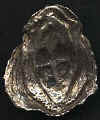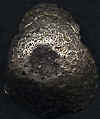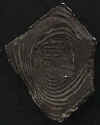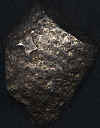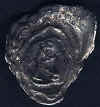Chinese Sycee that looks like cobs
Weight: 12.4 grams/4 reales
Date: N/A
Inscriptions: "十字"圖案
Symbol of "Cross"
Notes:
Collection of the webmaster
Weight: 27.8 grams/8 reales
Date: N/A
Inscriptions: 康
Kang (A last name)
Notes:
According to their sellers, these 2
pieces (Ccob-1,2) were excavated from a hoard of broken silver in
Fujien. Ccob-1, with
a symbol of a "cross", is an imitation of Spanish colonial cobs which
circulated in China, especially in Fujien, Kuangtung and other coastal
provinces, from the late 16th century. The weight of the 2 specimens are
close to that of the Spanish 4 reales and 8 reales coins, and they were probably
intended to circulate concurrently or in competition with Spanish colonial cobs.
The two pieces were probably cast during the late 17th to early 18th century, when Spanish colonial cobs had already gained wide acceptance in the markets of the Chinese coastal provinces.
Collection of the webmaster
Weight: 13.6 grams/4 reals
Date: N/A
Inscriptions: 水
Sui (Water, or Fineness)
Notes:
This is the 3rd Chinese sycee we found which imitates a Spanish colonial cob. It is different from the two specimens shown above since it has a Chinese character "Sui" which was obviously intended to deliver to users a message other than who cast it or what it imitated. The Chinese character "Sui" literally means "Water", but it was also used to stand for "Fineness". Perhaps, this inscription was telling the Chinese people that the silver it imitates came from overseas, or it carries the same fineness of an average native sycee.
Collection of Lisa and Dan Malloy
Return to Chopmarked Foreign Silvers
